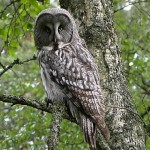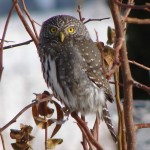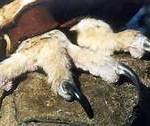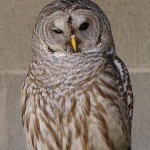Many birders, me included, have an affinity for owls (families Tytonidae and Strigidae). They bring a certain fascination, mystique and inspiration that compel many people to seek out these raptors when in the field.
Throughout the world there are some 205 species of owls, many scientists are suggesting that number could be as high as 226. With the advent of DNA testing there has been some arguments that due to the genetic makeup a new species may be validated. We are extremely fortunate in the Okanagan Valley in British Columbia to have a strong representation with 14 species. Several species like the Great Horned and Northern Pygmy reside here year round; others like the Flammulated and Burrowing migrate from southern climes to breed while others like the Snowy and Boreal visit in the winter.
Evolution has given these skilled hunters several tools which make them highly successful:
Eyesight
Some owls have exceptionally good night vision; their eyes have evolved in such a way that they can detect their prey in extremely low light conditions. Due to these predominantly nocturnal tendencies, owls have evolved several physical adaptations which facilitate catching prey in the dark. Owls have large forward facing eyes giving good stereoscopic vision, which is critical for judging distance. However, there are some shortcomings or trade-offs, owls are long sighted and cannot focus on objects which are too close. Within the eye (both humans and owls) there are photoreceptor cells called rods and cones. Rods allow for the interpretation of light while cones distinguish color. In an owl’s eye the proportion of rods to cones is exaggerated thus allowing for better light interpretation at night. Not all owls are nocturnal some like the Northern Pygmy Owl are diurnal and others like the Short Eared Owl are crepuscular.
Hearing
In humans our ears are symmetrical whereas in owls the ears are asymmetrical (one ear is higher than the other). Their ears are located behind the eyes on the side of the head. Many owl species have large facial discs which act like a radar disc guiding sounds to the ear openings. When something moves on the forest floor an owl can triangulate the sound and hone in on its prey.
Talons
These “weapons of mass destruction” are used to crush the skull of its victim. For some species, like the Great Horned Owl the crushing force is estimated to be 500 lbs per square inch (ten times more than a human hand). The talons are razor sharp; in captivity the handler needs to use thick leather gloves when working with even the smallest owl to avoid injury.
Wings
When most birds are in flight you can hear the beating of the wings, some like the rock pigeon are so noisy. As an owl flaps its wings it is silent, no noise whatsoever. The leading edge of the primary wing feathers are referred to as “flutings” or “fimbriae“. With a normal bird in flight, air rushes over the surface of the wing, creating turbulence, which makes a gushing noise. With an Owl’s wing, the comb-like feather edge breaks down the turbulence into little groups called micro-turbulences. This effectively muffles the sound of the air rushing over the wing surface and allows the Owl to fly silently.
So there you have it a highly skilled raptor with many adaptations in its “Toolkit” which has evolved into a specialized hunter and contributes to the management of our ecosystems by keeping in check populations of rodents and insects.
For the past 5 years I have been the Treasurer for the South Okanagan Rehabilitation Centre for Owls (SORCO) in Oliver, British Columbia. This facility takes in not only owls but all other birds of prey to rescue rehabilitate and release them back into the wild. Every year in addition to taking in injured adult birds they also rescue chicks, which are raised and also released. Due to this association it has been my privilege to witness most of the raptor species which are found in the Okanagan Valley, in 2013 SORCO took in over 100 birds of prey.






